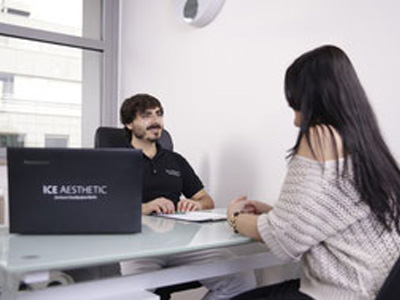Here we answer your most frequently asked questions about our treatment methods, the devices we use and many other important topics. However, we wish to point out that the information in our website is no substitute for a consultation with a specialist doctor. If you are uncertain whether cryolipolysis and/or shockwaves are the right thing for you please talk to your general practitioner or specialist. You can also write to us at any time.
Frequently Asked Questions (FAQ)
Cryolipolysis
Cryolipolysis is a non-invasive treatment of local fat deposits. As the treatment only takes place externally, no local anaesthetic is necessary. Cryolipolysis is already firmly established in the USA and is a very gentle form of treatment with few side effects.
The word cryolipolysis contains the ancient Greek word “kryos” which means frost/ice. This provides the basis for the treatment. It has been known for decades and proven in numerous studies that fat cells are more vulnerable to cold than other cells. This vulnerability of fat cells to the cold applied in the cryolipolysis procedure is used to treat the desired parts of the body non-invasively and without the need of an operation.
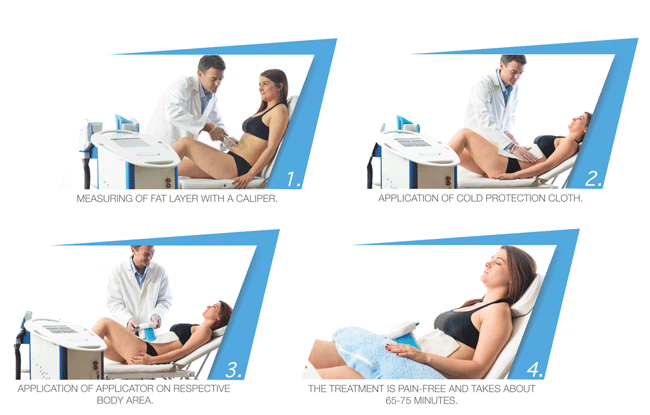
At the beginning of the procedure, our specialists will mark the zones to be treated in consultation with you. These will be covered by a special gel pad in order to protect the skin. A cup-shaped applicator will then be placed on the desired area and the fat tissue below is sucked into a vacuum. Most patients notice a light tugging sensation which goes away after around 10 minutes. Then the gentle cooling begins in stages with temperatures just below the freezing point. The cooling continues for around 70 minutes.
During the procedure, you can relax, read, listen to music, surf the internet, make calls, sleep or watch a film while the cryolipolysis device treats your fat cells.

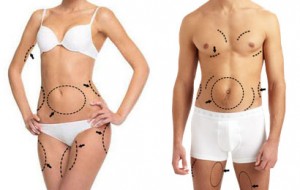
Cryolipolysis treatment zones for women (left) and men (right)
The body areas that we treat with cryolipolysis most frequently are:
- upper and lower stomach
- hips (waist, pelvic crests)
- thighs (inner and outer)
- male chest
- the back (also known as fir tree)
- upper arms
- calves / knees
- buttocks
- chin
Special treatment heads are selected depending on the area to be treated. These are chosen to be an ideal match for the body zone.
Before the treatment, our specialist medical staff usually conduct a short anamnesis with you by telephone in order to rule out risk factors and to make an appointment. When you are in our practice, you will receive a comprehensive consultation in which you are given information and advice. On the basis of this, it will be decided whether the treatment is suitable for you. Then we can start straight away. Each body zone is treated for about 70 minutes.
For ICE AESTHETIC®, the safety of the customer has the highest priority. Therefore, we work exclusively with Class IIa (93/42 EEC) cryolipolysis devices which are medically CE certified in order to ensure the best possible treatment. The cryolipolysis device is especially gentle and the technology used enables a reliable and constant cooling which is essential for good treatment. We usually recommend only 2 treatment sessions which take place 4 weeks apart. This has proven to be optimal for most of our customers.
The dual technology allows 2 zones to be treated simultaneously. This saves you time and money. For example, both hips can be treated in around an hour.
In order to ensure your safety, our devices constantly monitor temperature and pressure. If the current levels deviate only slightly from the standard levels, the treatment is ended immediately.
The cryolipolysis devices used by ICE AESTHETIC® are developed and manufactured in France using high-quality parts also from Germany and the USA. In France, our cryolipolysis devices are already used successfully by more than 300 doctors (plastic surgeons, dermatologists etc.).
We have carried out various tests and comparisons of devices, e.g. from Asia, with a leading engineering company in Berlin. We determined (especially regarding their cooling performance) that only few of the devices could ensure that the set temperature was adhered to constantly. Yet it is the exact cooling which is decisive for high-quality cryolipolysis treatment.
A further aspect, in addition to a constant temperature, is the consistent cooling of the zone treated. Also in this case, there are considerable differences on the market. The special design of the devices used by ICE AESTHETIC® together with the high-quality materials used in the applicators provide the highest level of comfort for the skin and also prevent, in most cases, problematic pressure points and bruising.
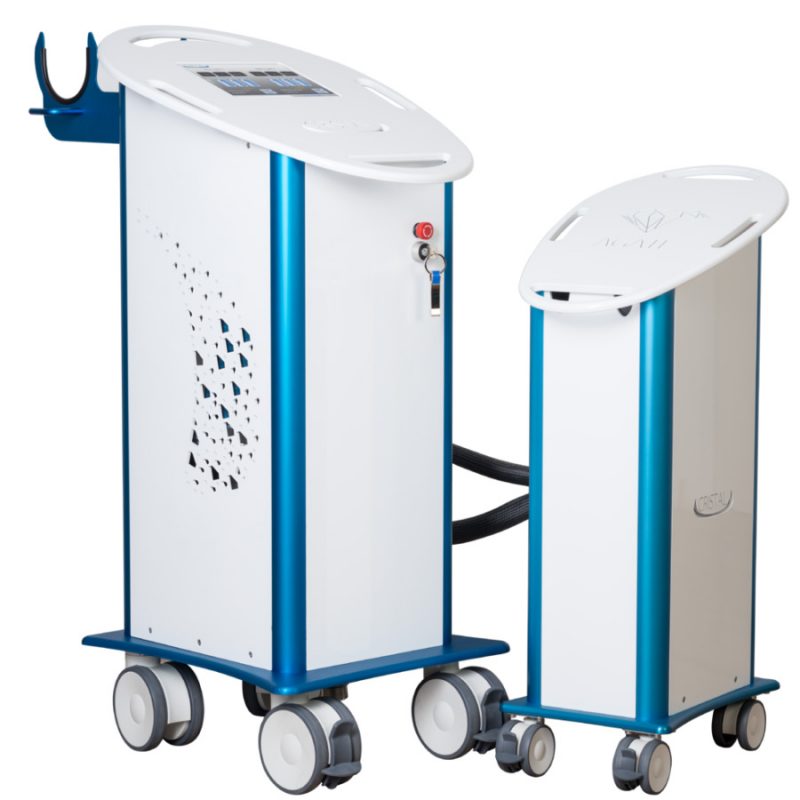
Cryolipolysis treatment is often offered by staff without any medical qualifications, e.g. hairdressers, fitness trainers and beauticians. A training certificate issued by the manufacturer is supposed to suggest competence.
We recommend for your own safety that you only have cryolipolysis treatment which is performed by medically trained staff, e.g. doctors, physiotherapists, nurses or similar. Although cryolipolysis involves few side effects, it is by no means the case that there are no side effects. Care needs to be taken to safely eliminate special risk factors. Cryolipolysis treatment can have health consequences for persons suffering from certain acute or chronic diseases.

In order to reduce the risk of bruising and prevent the cryolipolysis process from being unnecessarily negatively affected, we advise against taking blood-thinning medicines (such as aspirin) before the treatment and for some days after. However, it is important that you do not discontinue the medication without speaking to your doctor first. On the day of the treatment, we recommend that you wear comfortable clothing so that you feel good and that the areas treated are not overly compressed.
The amount of sessions depends on the customer’s wishes. We usually recommend 2 sessions. The second session for follow-up treatment of the same area should take place around 4 – 6 weeks later, if possible.
If you want to have other parts of the body treated, this is possible immediately after or within a few days of the initial treatment. If several body zones are to be treated, we can offer you attractive treatment packages which can lead to considerable financial savings.
After around 12 weeks (after the last treatment), we invite you to a check-up (free of charge) in order to talk to you individually about the results of the cryolipolysis and any possible follow-up treatment.
As scalpels, needles, anaesthetic and numbing are not necessary, there is no down-time. You can drive and work immediately after treatment. You can also do any type of sport without any restriction.
Compression devices are also unnecessary. You can carry out all of your daily activities. We only advise (for a few weeks) against saunas and long periods of sunbathing after treatment. You should discuss how long this period should last exactly with your local ICE AESTHETIC® cryolipolysis expert as factors such as your skin type can play a role.
On the basis of thousands of successful treatments carried out by ICE AESTHETIC®, the following additional points have proven to be useful after cryolipolysis:
- Plenty of activity and sport promote the metabolism and contribute to a healthy lifestyle. (We recommend 2x sport lasting around 30 minutes per week).
- Sufficient hydration – at least 2 litres of water per day.
- In the case of treatment to the stomach, 50 crunches (sit ups) per day.
- Reduced “bad” carbohydrates such as (white) bread, pasta, potatoes, rice, fruit drinks – if possible only vegetables and protein after 18.00.
- If possible, no alcohol before and immediately after the treatment.
Drink certain types of tea which promote the metabolism and have a detoxifying effect (e.g. nettle tea, wild garlic tea). ICE AESTHETIC® offers, in association with Shejoba, a hand-blended organic tea made in Germany. If you are interested, just let us know.
The controlled cooling of body zones through cryolipolysis has been examined extensively concerning possible risks and side-effects. As the process is non-invasive and as the treatment of the problem zones only takes place externally, it is very low-risk. In certain circumstances the following temporary side-effects may arise:
- bruising
- numbness
- slight to more pronounced redness
- slight swelling
- localised hardening of tissue
- touch sensitivity
In some cases of primary diseases and in very rare cases, an area of hardness in the fat tissue (known as panniculitis) can occur after cryolipolysis. Therefore, we only employ qualified medical staff (doctors, healing practitioners, physiotherapists etc.) who conduct comprehensive consultations to find out whether you can be treated without risk.
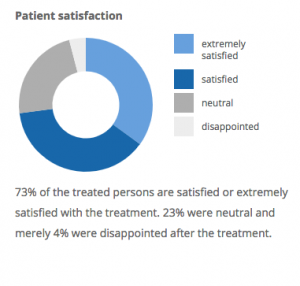
Cryolipolysis is unfortunately not possible in the case of certain diseases and if medicine is taken regularly. If you have any questions or doubts please do not hesitate to ask us at any time. In general, we also recommend that you ask your general practitioner/specialist to ensure that cryolipolysis is safe in your case.
Cryolipolysis is not suitable for persons with the following characteristics:
- very overweight
- pregnant
- during menstruation (touch sensitivity during the period)
- implants (e.g. pacemaker)
- recent operations in the zone to be treated (< 1 year)
- umbilical hernia or rupture (for treatment in this area)
- cold sensitivity or cold allergy
- hepatitis C (Cryoglobulinemia)
- paroxysmal cold hemoglobinuria
- sensitivity disorders
- anamnesis of bleeding or cold urticaria
- peripheral circulation disorders (e.g. Raynaud syndrome, white finger disease)
- customers with large scars, eczema and psoriasis in the area to be treated
- customers with diseases which require the regular taking of blood thinning medication.
Furthermore, autoimmune diseases and hematological primary diseases should be discussed with the practitioner.
